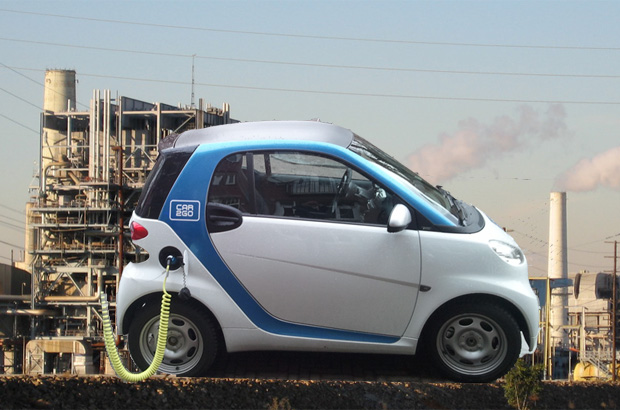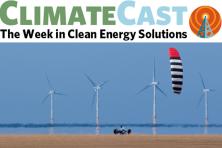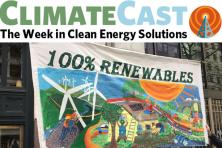With great fanfare, Burlington, VT, announced this fall that its municipal utility is now providing 100 percent renewable electricity. On the one hand, this is a noteworthy proof of the proposition that wind, water, and solar can provide all the electricity we need. If a city of 42,000 can do it, then scaling up that accomplishment by just under four orders of magnitude would free the entire U.S. electric grid of its dependence on fossil fuels. Not trivial, but not impossible, either.
There’s a little fly in this otherwise soothing ointment, however. To complete the last chunk of its 100 percent renewable portfolio, Burlington simply bought a 20-year-old hydro dam on the Winooski River. The city wins points for locavore electricity consumption: the dam is nestled beside a waterfall on the north edge of town. But Burlington’s acquisition didn’t increase the total amount of green power being consumed in New England; all it changed was who got the bragging rights for it.
In the short run, everyone is connected by the sinews of the power grid, where the amount of power generated from one moment to the next must exactly balance the amount of power consumed. Now that Burlington is claiming the dam’s green hydropower, the neighboring utilities, which had purchased that power, will turn to a different source, most likely natural gas, since that is the fuel consumed at the margin in New England.
Wind, water, and solar power are almost always used whenever they are available, because their fuel is free. It’s only in rare circumstances that they go begging, when transmission lines can’t accommodate the green bounty. For instance, in the spring and early summer of 2012, the Pacific Northwest was brimming with snowmelt-fed hydro during a period of low demand. For 12 days, scattered over a period of about three months, grid operators couldn’t accommodate all the wind power on offer from the Columbia Gorge and had to forgo it, reducing those wind farms’ annual output by a little less than 1 percent.
Burlington’s example gave me perspective on an exchange I had recently with a friend who is the proud owner of a plug-in electric car. Asked whether growing demand for electricity to charge EVs like his would increase the carbon emissions from the power grid, he dismissed the idea. “I live in Seattle,” he scoffed. “Ninety-four percent of our electricity comes from hydro and wind.”
In the long term, he has a point. Seattle City Light’s long-range plan vows that it will satisfy any net demand growth with renewable generation. If large numbers of Seattleites switch from internal-combustion to battery-powered vehicles, the city utility will commission new fossil-free sources to make up the difference. In time, the supply decisions made by Seattle City Light and Burlington Electric are at the right scale to drive the slow process of wringing the carbon out of our economy.
But in the short term, power dispatchers have fewer options to balance supply with demand. The last time green power went begging for lack of an electric vehicle to charge was during the 2012 curtailment. If Seattle residents increase their consumption of electricity, less carbon-free power is available to meet the needs of another utility’s customers. What isn’t used in Seattle might be consumed in Puget Sound Energy’s territory around the city; what isn’t used in the Northwest is sold to utilities as far south as Los Angeles. The balance of the demand—whether in Washington or California—is satisfied by a power dispatcher telling the operators of a gas turbine somewhere to crank it up.
Knit together by the grid, the power you save by turning off a light anywhere in the West translates to the same amount of CO2: 1.2 pounds per kilowatt-hour. Turn off a 20-watt light bulb for 22 minutes, and you’ve kept enough carbon dioxide out of the atmosphere to fill a 2-liter soda bottle. Conversely, plug in an electric car, and every kilowatt-hour it consumes amount to 1.2 pounds of CO2.
That math still makes my friend’s EV a win for the climate. A Nissan Leaf, charged with natural-gas-generated electricity, is the greenhouse equivalent of a petroleum-fueled internal combustion car that gets 54 miles per gallon of unleaded. The grid’s interconnections mean that for all an EV’s torque and coolness factor, there is one product it cannot yet deliver, even inside the Seattle city limits: a free pass on climate change.
Thanks to the grid, we all share the challenge of decarbonizing together, customers of hydro-rich municipal utilities and fossil-dependent regions alike. To paraphrase Eugene V. Debs’ most famous line, “While there is an emitting class, I am of it; while there is a soul burning fossil fuel, I am not fossil-free.”




